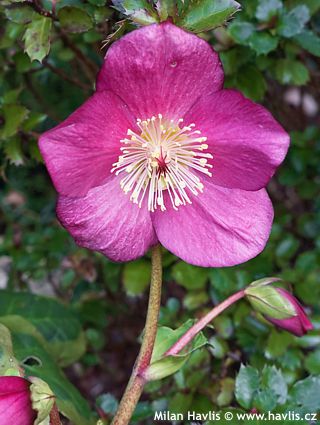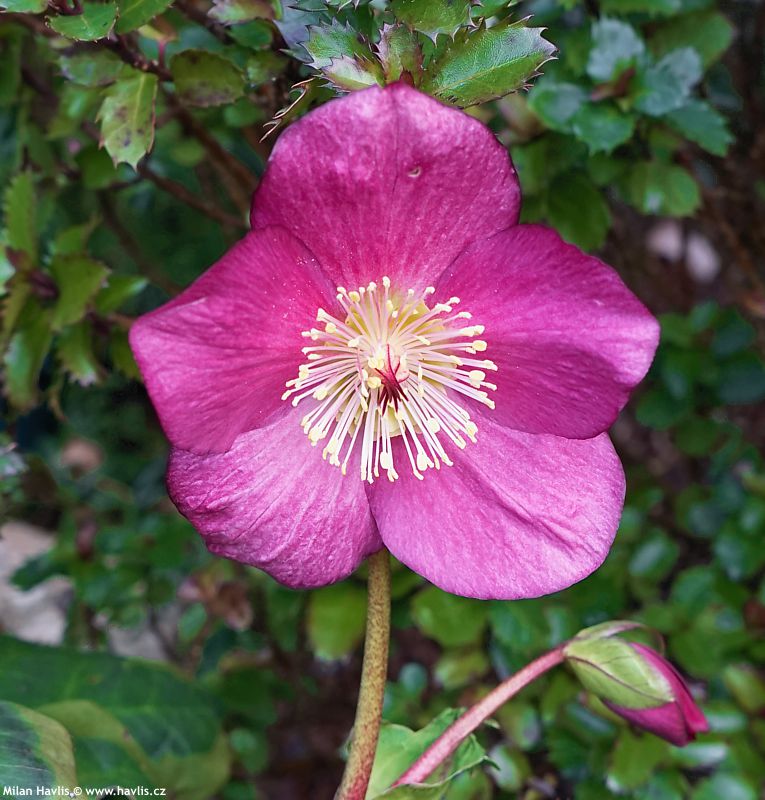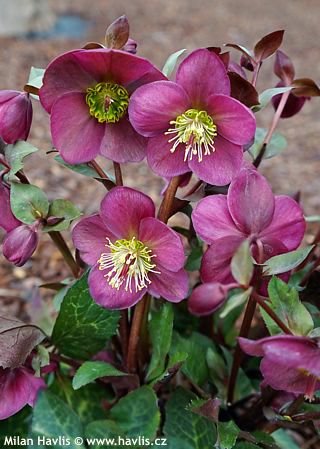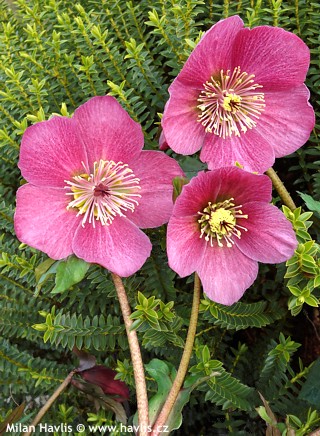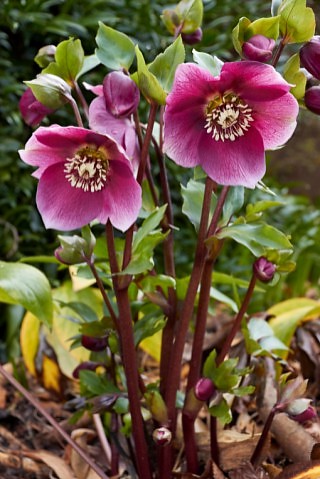Helleborus HGC® LEONA Lenten rose, hellebore
Helleborus
Hellebore (Lenten rose) is not a new plant to Czech and Slovak gardens. I remember those flowering stems that surprisingly pushed through the snow in late winter, and I kept asking grandma how come that a plant can flower while there is still snow on the ground. These evergreen perennials are still very popular, mainly thanks to newly hybridized varieties with fantastic flowers. German nursery Heuger has been breeding Lenten roses since 1950’s. No wonder they are considered the top producers of these beautiful plants in Europe. Their Helleborus Gold Collection® (HGC) is a trademark for the best inventions in the field of hybrid hellebores.
LEONA hellebore makes very large, up to 9 cm wide flowers which are bright purple red inside and deep maroon on the reverse. Stems are 30-40 cm tall and in full bloom flowers head towards the sun like a lion raising its majestic head to the sky, hence the variety name, which means lion in Latin. It begins to bloom in warm days of December and continues until April. The plant blooms profusely and forms a compact clump with evergreen, palmate, dark green, leathery leaves with serrated edges.
Helleborus x lemperii is a hybrid helleborus, a cross between late helleborus x hybridus and early helleborus niger from the German breeder Josef Heuger from Germany. For a long time, it was assumed that such a cross was not possible but now there is already a series of several varieties proving the opposite. You can enjoy the beauty of their flowers much earlier than on h. orientalis and other hybrids, already from December if the weather is mild. If December is frosty, the plants will hide their buds and will begin to bloom in the first warmer days of late winter.
Hellebore likes heavy, evenly moist, neutral to alkaline, rich in humus soil in dappled shade or filtered sun. This hybrid will prefer at least half a day with direct sunlight. Fertilizing will increase flowering and help the leaves remain strong and nice throughout the winter. Grow it somewhere near your house entrance or close to the window you look out of frequently so that you can enjoy the plant when it starts flowering since at that time the weather outside is not yet ideal for walking around the garden. The flowers can cheer up a number of grey and dull days of late winter therefore thumbs up for hellebore! Harmful if eaten. Hardy to about -29 °C (USDA zone 5).
Last update 25-01-2023

































